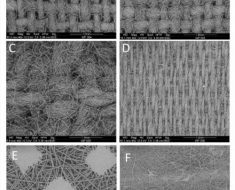In a recent study published in Molecules, researchers assessed the probable efficacy of tea tree oil (TTO) as a natural disinfectant against severe acute respiratory syndrome coronavirus 2 (SARS-CoV-2) using the human coronavirus OC43 (HCoV-OC43) and feline coronavirus (FCoVII) as surrogate models.

Background
SARS-CoV-2 can be transmitted in air or by contact with contaminated surfaces; therefore, effective disinfectants are essential to minimize exposure to SARS-CoV-2. Melaleuca alternifolia or TTO has been reported to have antiviral, antibacterial, and antifungal properties. It has been proposed that TTO can inhibit SARS-CoV-2 entry and influence the structural dynamics of the SARS-CoV-2 membrane and envelope constituents.
About the study
In the present study, researchers evaluated whether TTO could be potentially used as an effective disinfectant to limit SARS-CoV-2 contamination by assessing TTO efficacy using FCoVII and HCoV-OC43 as surrogate models.
First, the in vitro virucidal activity of TTO and its three main compounds (γ-terpinene, 1,8-cineole, and terpinen-4-ol) was assessed using an alphacoronavirus, FCoVII, and a beta coronavirus, HCoV-OC43. For the analysis, 5 Log ribonucleic acid (RNA) copies/mL of HCoV-OC43 and 6 Log median tissue culture infectious dose (TCID50/mL) of FCoVII were used with different dilutions of TTO-EtOH for five minutes, 15 minutes, and 30 minutes.
In addition, the probable activity of TTO against SARS-CoV-2 was assessed using Gaussian accelerated molecular dynamic simulations (GaMD) and an in silico approach, for which the SARS-CoV-2 spike (S) protein was simulated and examined in the absence or presence of the three major TTO components. The antiviral activities of the three major TTO components were also independently evaluated against HCoV-OC43 and FCoVII. Further, TTO virucidal activity was compared to that of a commonly used disinfecting agent (ISACLEAN), which comprised benzalkonium chloride (50%), isazone, isopropanol, and chlorhexidine gluconate.
Results
Formulation A, comprising 3.3% TTO and 5.3% EtOH was strongly virucidal. It inhibited replication of FCoVII in CRFK cells with a minimum of a 3.5 Log TCID50/mL reduction of the feline coronavirus titers within five minutes. Similar findings were obtained after 15 minutes and 30 minutes of FCoVII contact with the same formulation. Contrastingly, for formulations B and C (with lower concentrations), no or moderate virucidal activity against FCoVII was observed.
Likewise, a decrease of 1.4 Log RNA copies/mL of HCoV-OC43 was attained after 30 minutes using formulation A, with moderate virucidal effects against HCoV-OC43 using formulations B and C. At 3.3% TTO concentration, HCoV-OC43 activity was inhibited, whereas no substantial effects were observed with the other concentrations beginning from 0.7%.
On the contrary, formulation D (5.3% EtOH) did not inhibit the replication of HCoV-OC43 and FCoVII in vitro. Within five minutes of contact, the commonly used disinfecting agent induced a ≥99% inactivation of FCoVII and HCoV-OC43, similar to TTO formulation A effects against HCoV-OC43 and FCoVII after 30 minutes and five minutes of contact, respectively.
At 3.3% concentration, all the three prime TTO components demonstrated robust antiviral effects against both the surrogate coronaviruses, with 1.0 Log (90%) and 0.9 Log (87.1%) reductions in the titers of FCoVII and HCoV-OC43, respectively, within 15 minutes of γ-terpinene contact. Of note, after 30 minutes of exposure, ≥1.0 log reduction was noted for both surrogate coronaviruses on exposure to γ-terpinene, which accounted for ≥90% of virus inactivation.
However, at 0.7% concentration of γ-terpinene, a ≥90% decrease in titers was observed for only HCoV-OC43 post 30 minutes of exposure, whereas the effects on FCoVII were lesser. A 3.3% 1,8-cineole concentration led to a >90% reduction in HCoV-OC43 titers within five minutes of exposure. Still, at 0.7% concentration and 30 minutes of contact, the compound’s efficacy was lowered, and virus titers were reduced by 85.5% (0.8 Log).
Of interest, terpinen-4-ol was the most virucidal of all three TTO components against the surrogate coronaviruses, at the 3.3% concentration and at all the time points (five minutes, 15 minutes, and 30 minutes), with a (≥99%) (≥2.2 Log) reduction in viral titers within only five minutes of contact. Terpinen-4-ol demonstrated lesser effects against the surrogate coronavirus models, with a 90% decrease in FCoVII titers and a 77% decrease in HCoV-OC43 titers after 30 minutes of contact.
In the second GaMD phase (from 100 ns till the end of simulations), the membrane thickness of SARS-CoV-2 increased by 0.7 Å in the presence of TTO. While all the three main TTO components were inserted into the membrane, γ-terpinene reached the opposite membrane leaflet, showed lateral movements, and was most persistently bound to the S surface. Radial distribution functions (RDFs) analysis showed a sharp peak in γ-terpinene density at 0.8 to 1.9 nm from the S protein.
The γ-terpinene binding site corresponded to fatty acid (FA) residues 330 to 470 and 500 to 515 of SARS-CoV-2 S, and the binding of γ-terpinene (and other TTO components) decreased SARS-CoV-2 S binding angiotensin-converting enzyme 2 (ACE2) of the host. The TTO compounds could also cause steric hindrance of S subunit 2 (S2)-protease interactions and showed transient binding with the HR2 helix bundle residues 1163 to 1202.
For the S1 and S2 subunits, increased negatively correlated motions and decreased positively correlated motions were observed with TTO. The N-terminal domains (NTDs), receptor-binding domains (RBDs), and C-terminal domains (CTDs) of SARS-CoV-2 S showed the appearance and disappearance of many salt bridges in TTO presence. However, five salt bridges [glutamic acid (Glu)169-lysine (Lys)129, aspartic acid (Asp)290-Arg273, Asp398-arginine (Arg)355, Asp442-Arg509 and Asp53-Lys195] demonstrated high stability.
Conclusion
Overall, the study findings showed that TTO could be a potential disinfectant to limit SARS-CoV-2 transmission, based on TTO virucidal activity against FCoVII and HCoV-OC43 and alterations in the physical properties and structural organization of the SARS-CoV-2 envelope.
- Romeo, A. et al. (2022) "Potential Use of Tea Tree Oil as a Disinfectant Agent against Coronaviruses: A Combined Experimental and Simulation Study", Molecules, 27(12), p. 3786. doi: https://doi.org/10.3390/molecules27123786 https://www.mdpi.com/1420-3049/27/12/3786
Posted in: Medical Science News | Medical Research News | Disease/Infection News
Tags: ACE2, Angiotensin, Angiotensin-Converting Enzyme 2, Antifungal, Arginine, Aspartic Acid, Compound, Contamination, Coronavirus, Disinfectant, Efficacy, Enzyme, Glutamic Acid, Helix, in vitro, Lysine, Membrane, Protein, Receptor, Respiratory, Ribonucleic Acid, RNA, SARS, SARS-CoV-2, Severe Acute Respiratory, Severe Acute Respiratory Syndrome, Syndrome, Tea, Tissue Culture, Virus

Written by
Pooja Toshniwal Paharia
Dr. based clinical-radiological diagnosis and management of oral lesions and conditions and associated maxillofacial disorders.
Source: Read Full Article





